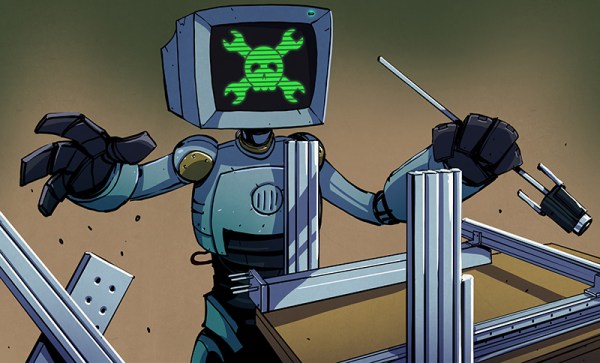Hobbyist 3D printers have had a home in the maker space for years now. Along the way, they’ve left a mark in our imaginations. They’ve tickled our fancy for watching a computer orchestrated symphony written in G-code hum away while cranking out parts. They’ve opened a door to the idea that while computer controlled machines may be decades old, having one or two homebrew setups in our garage might not be as far-fetched as we first thought. Now that we’ve seen the steppers and linear slides that go into these setups, it’s not unreasonable for many of us to start asking: What else? Perhaps a computer numerically controlled (CNC) lathe, mill, or even a laser cutter–anything that would add to the vocabulary of tools and techniques that we’re starting to build at home.

Since 3D printers have become somewhat commonplace, it’s not too difficult to find commodity spare parts spilling to the surface of online vendors’ websites. We can even find kit versions for building our own variants. Now that the notion of CNC-at-home is here to stay, the question for 2016 is: do we build our own CNC tools or buy them?
Despite the countless CNC build logs, extruded aluminum kits, and open source G-code interpreters, I’m still convinced that unless your needs are truly custom, buying the machine that fits your needs will have you putting together projects faster and with far less maintenance than you’d need if you assembled the machine yourself. In what follows, I thought I’d explore a few machines that we can find today in 2016 that make the dream of desktop fabrication a reality.
Continue reading “Sourcing Your CNC Tools In 2016: Buy Them”













